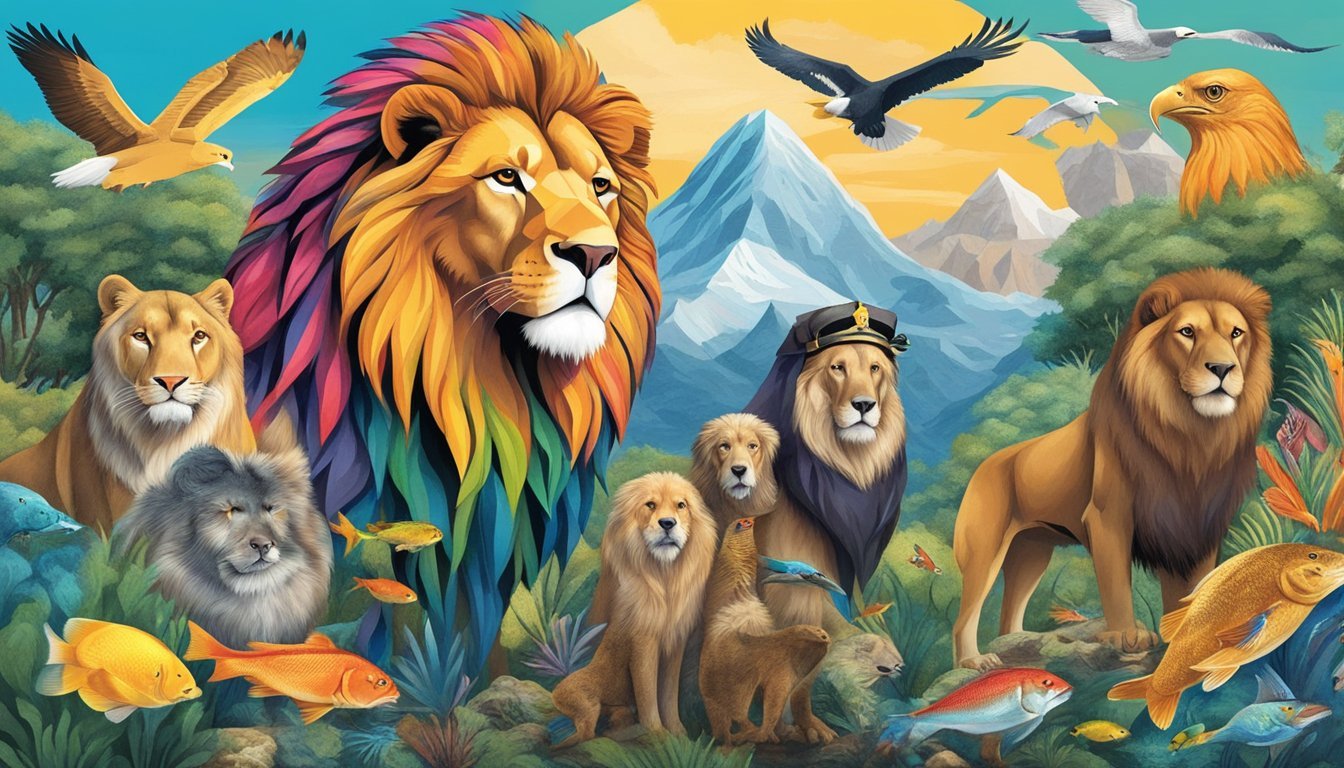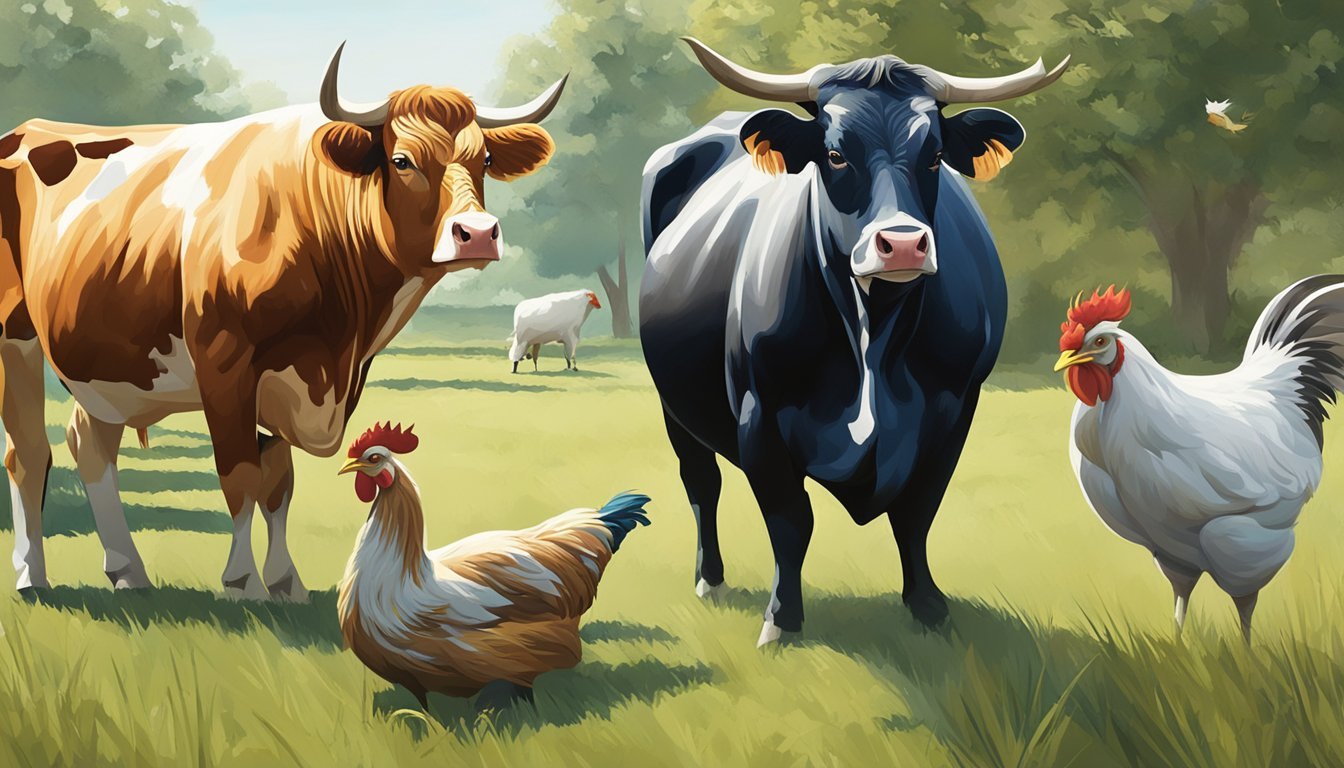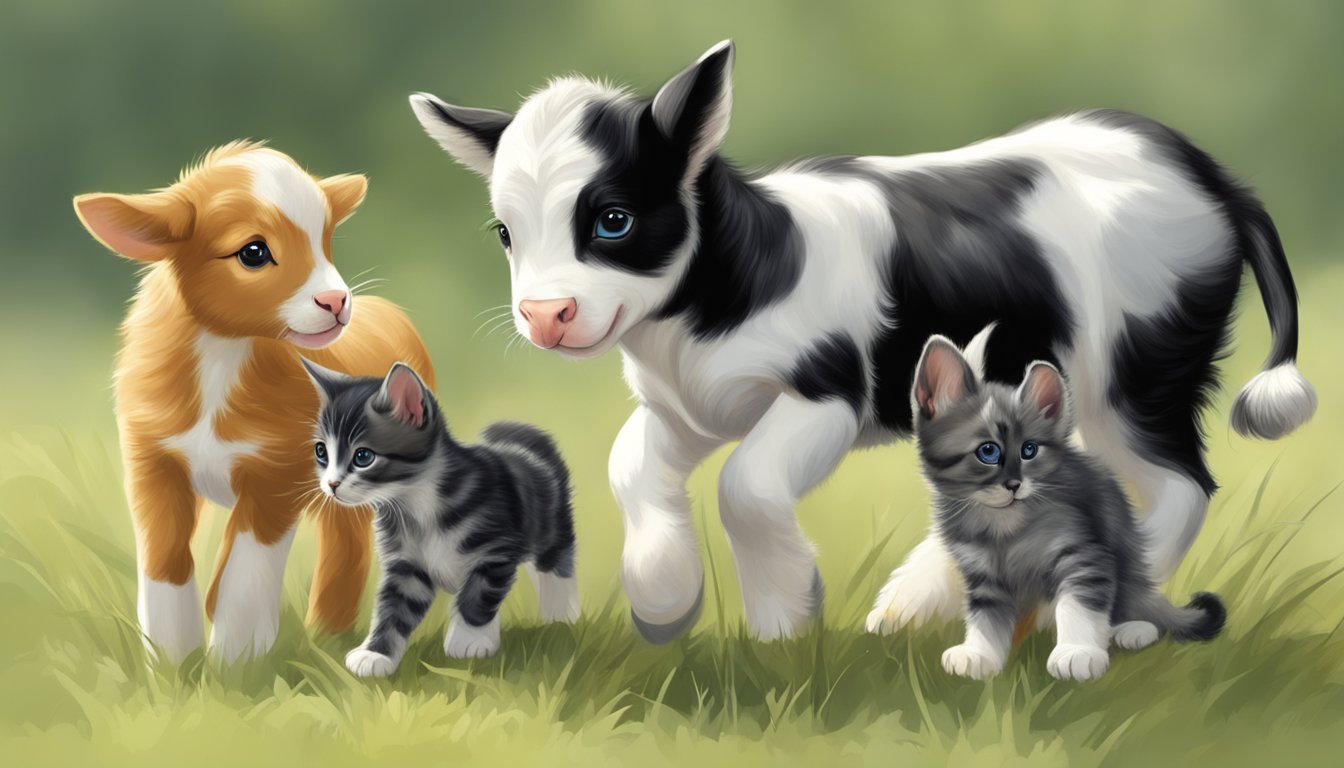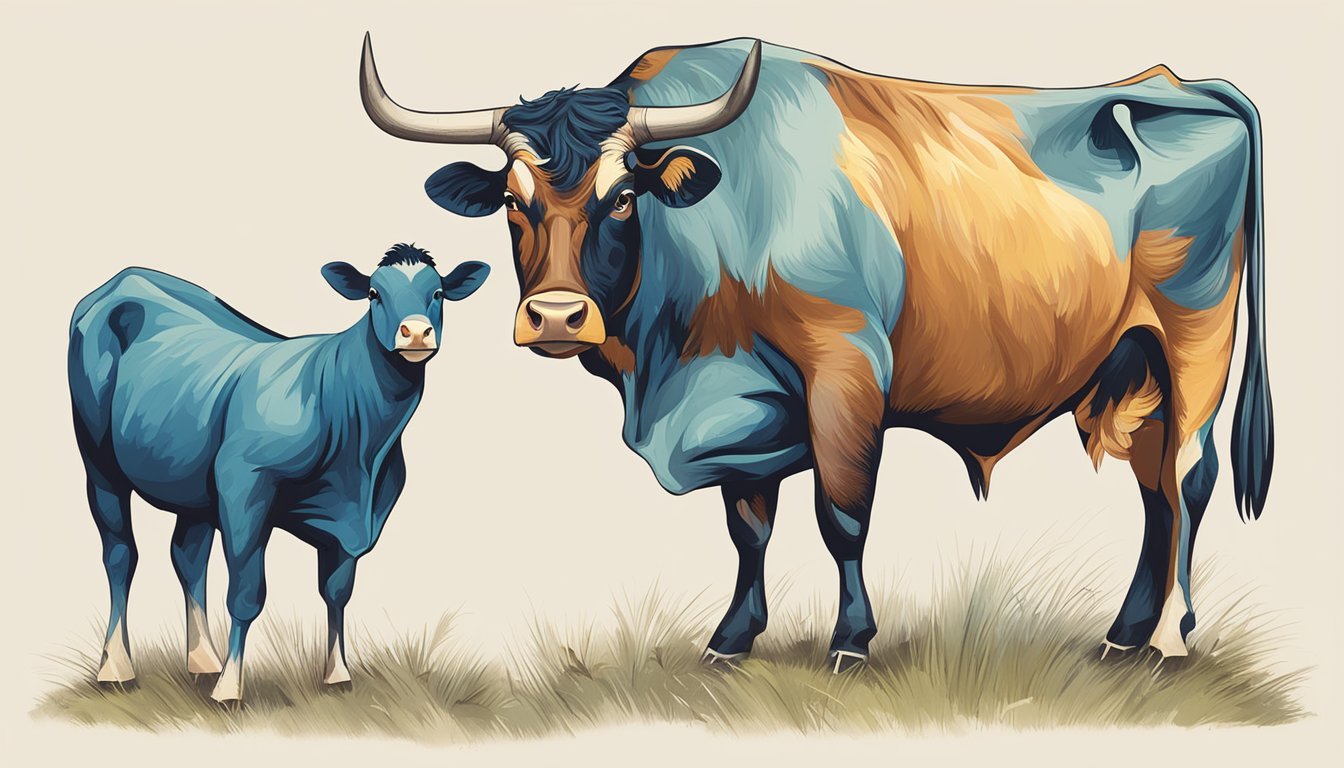Learning animal names in English is an exciting and essential part of early education for preschool kids. It not only helps them expand their vocabulary but also fosters a deeper understanding of the world around them. Knowing animal names enhances communication skills, making it easier for children to share their thoughts and ideas about these fascinating creatures.
Understanding the significance of animal names is crucial in both educational and everyday contexts. Animals play a vital role in stories, songs, and conversations, making it important for kids to recognize and name them accurately. This knowledge also lays the foundation for future studies in biology and environmental science.

Animal Names in English
In this article, you will discover:
- The different categories of animals and their characteristics.
- Interesting collective nouns are used for various animal groups.
- Special terms for young animals.
- Gender-specific animal names.
- Insights into extinct animals and how animal names vary across languages.
By the end of this journey, you’ll have a rich understanding of animal names in the English language. Let’s dive in! 🐾
1. Understanding the Categories of Animals
Animals are classified into various categories to better understand their similarities and differences. This classification helps in organizing the vast diversity of animal species into manageable groups. Let’s explore some of the main categories of animals:
- Mammals
- Reptiles
- Fish
- Birds
- Amphibians
2. Collective Nouns for Animal Groups
- Collective nouns are unique terms used to describe groups of animals. They add a touch of whimsy to our language and make conversations about animal groups even more interesting. Here are some notable collective nouns:
- A herd of elephants
- A pack of wolves
- A flock of birds
- A pride of lions
- A school of fish

Animal Names in English
3. Special Terms for Young Animals
Young animals often have special names that differ from those of adults. These terms, known as “baby animal names,” are endearing and capture the essence of these adorable creatures:
- A kitten (baby cat)
- A cub (baby lion or tiger)
- A pup (baby dog)
- A calf (baby cow)
- A foal (baby horse)

Animal Names in English
4. Gender-Specific Animal Names
- Interestingly, some animals have different names depending on their gender. While this distinction is not common among all species, it adds another layer of complexity to the world of animal names:
- A male elephant is called a bull, while a female is called a cow.
- A male chicken is referred to as a rooster or cock, whereas a female is called a hen.

Animal Names in English
5. Insights into Extinct Animals
- The study of extinct animals, known as palaeontology, uncovers fascinating details about species that once roamed the Earth but no longer exist today. Some well-known examples include dinosaurs like Tyrannosaurus rex and woolly mammoths.
6. Animal Names Across Languages
- Animal names can vary across different languages, reflecting the rich diversity in cultural perspectives and linguistic traditions worldwide. Exploring these variations can be a delightful way to appreciate the global tapestry of human-animal relationships.
- In conclusion, understanding animal names opens up a world of knowledge and curiosity. From recognizing animal categories to discovering unique collective nouns, baby animal names, gender-specific terms, and even exploring extinct species – each aspect adds depth to our understanding and appreciation of the animal kingdom. So, let’s embark on this exciting journey of discovery together!
Mammals
Mammals are warm-blooded animals characterized by the presence of hair or fur and mammary glands, which females use to nurse their young. They have a highly developed brain and a complex nervous system.
Characteristics:
- Warm-blooded
- Have hair or fur
- Possess mammary glands for nursing
Common Examples:
- Lion: Known as the “king of the jungle,” lions are powerful predators.
- Tiger: Recognizable by their dark vertical stripes on orange fur.
- Goat: Domesticated for milk, meat, and wool.
- Horse: Valued for their speed, strength, and endurance.
- Dog: Loyal companions and widely domesticated pets.
- Cat: Independent pets known for their agility.
- Rabbit: Small mammals with long ears and strong hind legs.

Animal Names in English
Reptiles
Reptiles are cold-blooded vertebrates that typically lay eggs. They have scaly skin that helps prevent water loss, making them well-suited for dry environments.
Characteristics:
- Cold-blooded
- Have scales
- Lay eggs (mostly)
Importance Within Ecosystems:
Reptiles play crucial roles in ecosystems as both predators and prey. They help control insect populations and serve as food for various larger animals.
Common Examples:
- Snake: Carnivorous reptiles known for their elongated bodies.
- Crocodile: Large aquatic reptiles with powerful jaws.
- Tortoise: Land-dwelling reptiles with hard shells.
- Lizard: Diverse group including species like geckos and iguanas.
Fish
Fish are aquatic animals that live in water throughout their lives. They come in a wide variety of shapes, sizes, and habitats, from freshwater rivers to deep ocean trenches.
Characteristics:
- Aquatic
- Have gills for breathing underwater
- Covered in scales
Common Examples:
- Salmon: Known for migrating upstream to spawn.
- Shark: Apex predators with sharp teeth.
- Eel: Long, snake-like fish found in both fresh and saltwater.

Animal Names in English
Birds
Birds are warm-blooded vertebrates with feathers, beaks, and a high metabolism. They lay eggs with hard shells and most can fly due to their lightweight skeletons.
Characteristics:
- Warm-blooded
- Have feathers
- Lay hard-shelled eggs
Importance in Nature and Culture:
Birds play significant roles in pollination, seed dispersal, and pest control. Culturally, they symbolize freedom and are often featured in art and folklore.
Common Examples:
- Crow: Intelligent birds known for problem-solving abilities.
- Eagle: Majestic birds of prey with
2. Collective Nouns for Animals
Understanding collective nouns adds a fun and educational layer to learning about animals. These special terms describe groups of animals and are widely used in the English language.
Why Collective Nouns Matter
Collective nouns are unique because they turn a simple description into something more vivid and specific. For instance, instead of saying “a group of lions,” we use the term pride. This not only enriches our vocabulary but also adds a touch of creativity to our communication.

Animal Names in English
Examples of Collective Nouns
Here are some engaging examples from various animal groups:
Mammals
- Lions: A pride of lions 🦁
- Cows: A herd of cows 🐄
- Kangaroos: A mob or troop of kangaroos 🦘
Birds
- Crows: A murder of crows 🪶
- Eagles: A convocation of eagles 🦅
- Pigeons: A flight or flock of pigeons 🕊️
Fish
- Fish (general): A school or shoal of fish 🐟
- Sharks: A shiver of sharks 🦈
Amphibians
- Frogs: An army of frogs 🐸
Using these terms makes the language more colourful and precise. It also helps children understand the social behaviours and characteristics of different animals. Imagine talking about an “army” of frogs—it’s not just informative but also sparks curiosity and joy!
Incorporating these collective nouns into daily conversations can make learning about animals even more exciting for preschool kids.
They provide a playful way to talk about nature while expanding vocabulary skills. This section encourages young learners to see language as a dynamic tool where every word can bring new adventures in understanding the animal kingdom.
For more insights into the fascinating world of animal group names, you might find this resource helpful. Additionally, exploring the concept of speaking collectively can further enhance your understanding and usage of collective nouns in everyday language.
3. Young Animals and Their Names 🐾
Understanding the names of young animals helps kids connect with nature and learn about animal development. Let’s explore some specific terms for young animals across different species:
Young Mammals 🐶🐱
- Puppy: A baby dog is called a puppy. Puppies are known for their playful nature and are often very cute!
- Kitten: A baby cat goes by the name Kitten. Kittens are small, furry, and a favourite among children.
- Calf: The young of a cow is referred to as a calf. Calves are usually found on farms and are raised for dairy or meat.
These terms help children understand that animals, like humans, grow through different stages of life.

Animal Names in English
Young Reptiles 🐢🐍
Reptile babies have unique names too:
- Hatchling: Many reptiles like turtles and lizards have babies called hatchlings. This term comes from the fact that they hatch from eggs.
- Snakelet: A baby snake can be called a snakelet or simply a hatchling when it first emerges.
Fish Fry and Juvenile Stages 🐟
Fish have fascinating life stages:
- Fry: The term fry refers to newly hatched fish. They are tiny and require special care in aquariums or their natural habitats.
- Juvenile Fish: As they grow, fry become juvenile fish before reaching full adulthood.
Comparing these stages with mammals, we see how each species has its way of developing from young to adult forms.
Naming Conventions for Baby Birds 🐦
Birds also have specific names for their young:
- Chick: A general term for many baby birds is chick. For example, a baby chicken is called a chick.
- Fledgling: As chicks grow, they become fledglings—young birds learning to fly.
Terminology for Young Amphibians 🐸
Amphibians undergo remarkable transformations:
- Tadpole: Young frogs are known as tadpoles. They start life in water with tails and gills.
- Eft: Some newts have a juvenile stage called an eft, which appears after the tadpole phase.
These names illustrate how diverse life cycles can be across different animal species.
Young animal names add another layer of understanding to the world of animals. Using these terms helps children recognize the growth stages in various species, enriching their vocabulary and appreciation for wildlife.
4. Gender-Specific Animal Names 🐂🐄
Understanding gender-specific names is an exciting part of learning about animals. Many animals have distinct names depending on whether they are male or female. This distinction helps in identifying and studying animal behaviour, reproduction, and roles within groups.
Examples from Various Species
Here are some examples of gender-specific names for different animals:

Animal Names in English
Cattle
- Male: Bull
- Female: Cow
Lions
- Male: Lion
- Female: Lioness
Chickens
- Male: Rooster
- Female: Hen
Deer
- Male: Buck/Stag
- Female: Doe
These gender-specific names often reflect the physical differences and roles between males and females. For example, a male lion has a mane, while a female lion does not.
Cultural Significance 🌏
Gendered terminology in animal naming can also carry cultural significance. In many cultures, these names are tied to traditions, stories, and symbols.
- In ancient mythology, the lion (male) represents strength and royalty, while the lioness symbolizes nurturing and hunting prowess.
- Bulls are often seen as symbols of power and fertility in various cultures.
These distinctions help enrich our understanding of animals within different societal contexts. By learning these names, children not only expand their vocabulary but also gain insights into how humans have interacted with and perceived animals throughout history.
Gender-specific animal names are an integral part of language that reflects both biological differences and cultural values. These terms are essential for clear communication and deeper learning about the natural world.
5. Extinct Animals and Language Variations in Animal Names
Extinct Animals 🦖
Learning about extinct animals opens up a fascinating window into the past. These creatures, which no longer roam the Earth, have left a significant mark on both science and culture. Dinosaurs are perhaps the most well-known extinct animals. Names like Tyrannosaurus Rex, Triceratops, and Stegosaurus evoke images of a world millions of years ago.
Some other famous extinct animals include:
- Sabre-Toothed Tiger (Smilodon): Known for its long, curved canine teeth.
- Woolly Mammoth: Resembling modern elephants but covered in thick fur, adapted to cold environments.
- Dodo: A flightless bird that once inhabited Mauritius and became extinct in the late 17th century.
These names help us understand the evolutionary history and the reasons behind extinction events, emphasizing the importance of conservation today.
Language Variations in Animal Names 🌐
Animal names can vary greatly across different languages, reflecting cultural diversity and historical context. For example:
Examples of Language Variations
- Dog:
- English: Dog
- Spanish: Perro
- French: Chien
- Cat:
- English: Cat
- Spanish: Gato
- Japanese: Neko
These variations highlight how language shapes our understanding of the natural world. Cultural implications are also evident in animal symbolism; for instance, cats are often associated with luck in Japanese culture but are seen differently in others.
Understanding these differences fosters better cross-cultural communication and appreciation for global biodiversity. It also enriches language learning by connecting words to real-world entities children find intriguing.
Fun Fact ✨
Did you know that some cultures have unique names for animals based on their characteristics? For example, the Inuit have multiple words for different types of seals—each describing specific attributes!
Exploring these extinct species and language variations not only broadens vocabulary but also deepens knowledge about the world’s rich tapestry of life.
Conclusion
Learning animal names in English enriches communication and education. Understanding these names helps children identify and describe the world around them, fostering curiosity and awareness.
Encouraging kids to explore further:
- Visit Zoos and Aquariums: Experience real-life encounters with animals.
- Read Animal Books: Discover fascinating stories and facts.
- Watch Nature Shows: Visual learning through documentaries.
Exploring the world of animals goes beyond just their names. It opens up a realm of discovery, learning, and appreciation for biodiversity.
“Animals are not just creatures; they are part of our global family. Learning about them helps us understand our planet better.”
Engage with various resources to deepen your child’s knowledge and love for animals.
FAQs (Frequently Asked Questions)
What are the main categories of animals?
The main categories of animals include mammals, reptiles, fish, birds, and amphibians. Each category has its characteristics and significance in classification, with examples such as lions and tigers for mammals, snakes and crocodiles for reptiles, salmon and sharks for fish, crows and eagles for birds, and frogs and salamanders for amphibians.
What are collective nouns for animals?
Collective nouns are terms used to describe groups of animals. For example, a group of lions is called a pride, while a group of fish is referred to as a school. Understanding these collective nouns enhances communication in English and adds richness to the language.
What are some names for young animals?
Young animals have specific terms that can vary by species. For instance, a young dog is called a puppy, a young cat is a kitten, and a young cow is referred to as a calf. These names help in understanding animal development across different species.
Are there gender-specific names for animals?
Yes, many animals have gender-specific names. For example, a male lion is referred to as a lion while the female is called a lioness. Understanding these distinctions can also provide insights into the cultural significance behind gendered terminology in various cultures.
What can you tell me about extinct animals?
Extinct animals, such as dinosaurs like the sabre-toothed tiger or woolly mammoth, play an important role in evolutionary studies. Additionally, animal names can differ across languages; for instance, the name for an animal may vary between English and Spanish, reflecting cultural implications.
Why is it important to learn animal names in English?
Learning animal names in English is significant for effective communication and education. It allows individuals to discuss wildlife accurately and fosters an appreciation of biodiversity. Furthermore, exploring the world of animals beyond just their names enriches our understanding of nature.







Leave a Comment